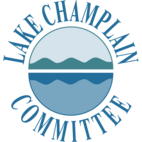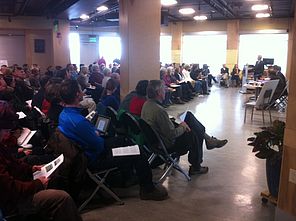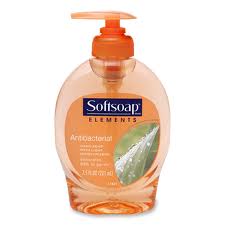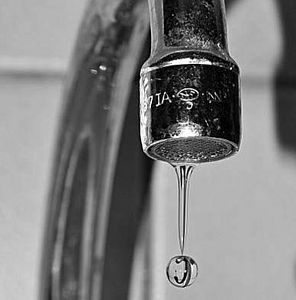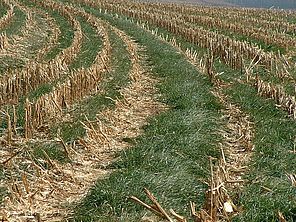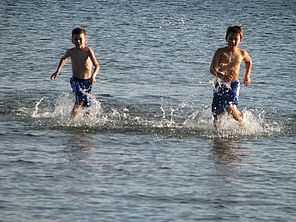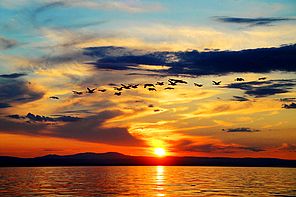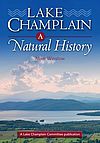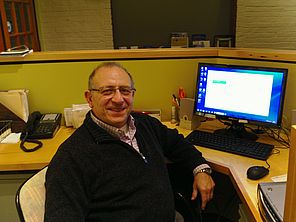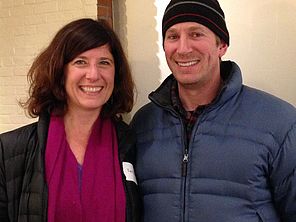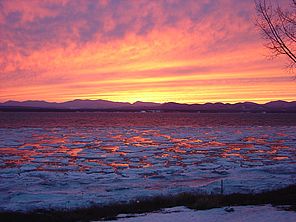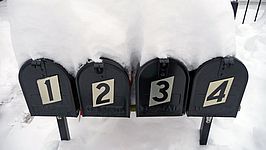Dear LCC Members and Friends,
Below is our December issue of Ripples, LCC's monthly E-newsletter covering lake issues and our work. Lake Champlain is our inspiration. It provides equal parts awe, adventure, and sustenance. It adds immeasurably to our quality of life and it's our place to take care of. Thank you for caring about the lake and for all you do to protect and improve water quality. As we move towards the close of another year we want you to know how much we appreciate your involvement and support in the ongoing work for clean, accessible water. When you make a donation, participate in an event, come out to a hearing, write policy makers, or volunteer your time, it truly makes a difference.
We wish you peace and joy this holiday season.
With thanks,

Lori Fisher
LCC Executive Director
Vermont’s Lake Clean-up Road Show
The state of Vermont and the Environmental Protection Agency (EPA) held a series of six meetings around the state to discuss clean-up plans for Lake Champlain. The meetings were very well attended with 60-130 people at each location. Thanks to all LCC members who turned out for the meetings or sent in comments.
EPA is rewriting the lake pollution budget – known as a TMDL or Total Maximum Daily Load. In rewriting the budget, EPA first determined how much phosphorus the lake could absorb and still meet water quality standards. They then deducted a margin of safety, perhaps 5%. The remaining pollution load is divided between point sources, those with federally administered permits, and non-point sources, areas that generate phosphorus but do not receive permits. Currently Vermont discharges approximately 533 metric tons per year to Lake Champlain. According to EPA's models, in order to meet water quality standards that discharge needs to decrease to 343 metric tons per year, a 36% reduction. Since EPA only has permitting authority over the point sources, they need a reasonable assurance from Vermont that the state can achieve reductions in non-point sources...Continue reading on LCC's website
Extreme Clean Isn't Green
The FDA recently announced that it is requiring manufacturers of anti-bacterial soaps to prove they're safe. We think that's a good idea. The active ingredient in anti-bacterial soaps does not breakdown at wastewater treatment plants so it can end up in our waters. They can pose health risks such as an increase in bacterial resistance and impacts on hormones.
The presence of pharmaceuticals and other “new generation” contaminants in surface waters of the United States has been well documented. In Lake Champlain, for example, researchers have found caffeine, HHCB (a musk fragrance), metolachlor (an herbicide). Effects are not well known and likely to vary as much as the contaminants themselves do. Among the most worrisome groups of new-generation contaminants are antimicrobials. The widespread use of antimicrobial soaps and detergents has led to the spread of “super-germs”, resistant to many of our medications...Continue reading on LCC's website
Agricultural Tile Drains – Beneficial or Costly?
If you walk along a stream in an agricultural area it is not unusual to encounter pipes discharging water directly into it. These pipes are attached to drain systems that farmers use to lower the water table for their fields. The practice, termed tile draining, can dramatically improve crop yields on marginal fields, but its environmental impact is unclear.
Fields have been tiled for millennia. The Roman statesman Cato was the first to describe the practice around ancient Rome. He noted the use of brush, straw, poles, stones, boards, and tile to improve drainage in fields. It was popularized in the United States in the mid 1800s by John Johnston, a Scottish immigrant who used tile drainage to improve the poor soils of his farm in upstate New York. Today perforated plastic piping has largely replaced actual ceramic tiles in fields...Continue reading on LCC's website
Winter Water Conservation Tips
Water conservation is something we may think about during the hot days of summer but what about winter? While we aren't watering lawns or gardens in the Champlain Valley there are still plenty of ways to cut back on water use during the chilly months. Remember, water use is an energy intensive process so by reducing your consumption you'll lower your energy bill as well.
- Insulate hot water pipes. Cover indoor pipes with insulation, especially those on an outside facing wall or in unheated areas of your home. This will reduce the amount of water that must be run to get hot water from the faucet and avoid leaks from cold pipes. To be effective, insulate the full pipe including elbows and pipe tees.
- Identify the water shut-off valve for your house. Locate your master water shut off valve and mark it for quick identification. If a pipe does burst, you'll be able to shut off the water flow quickly and minimize damage and water loss.
- Use a Shower Bucket. Since it takes longer for your shower to heat up in winter, catch that cold water and use it to flush toilets or water plants. This is a trick that you can use year-round, but it’s especially helpful in winter when your shower runs cold for a bit longer.
- Drain your pipes before long absences. This will help you avoid a pipe bursting from the cold while you're away. Turn the water off at the main valve, open all of the faucets so that they drain completely and then use forced air from an air compressor to completely dry out the pipes.
- Check for faucet and toilet leaks. Even a tiny leak can cause lots of water loss.
- Add an aerator to your faucets. You'll still get plenty of flow but use less water.
Check out LCC's website for more tips on saving water at home and work. Wondering how much water you consume? Use National Geographic's calculator to assess the water footprint of your home, yard, diet, energy and consumer choices.
Conservation Practices Become Widespread in Chesapeake Bay
A new report from the USDA offers hope that conservation practices can spread widely in a region in a relatively short period of time. The report shows that adoption of farm conservation practices in the last five years have led to significant offsets of water pollution. The combined conservation practices have lowered the estimated average edge-of-field losses of eroded soil by about 15.1 million tons per year.
The report compared data collected between 2003 and 2006 with data collected in 2011. This is the first time USDA has compared changes in conservation practices in a specific region over two points in time.
One agricultural practice that has increased dramatically is the use of cover crops. Cover crops are planted on a field to hold the soil after the cash crop has been harvested. In the spring cover crops can be tilled in to provide a form of green manure. Since 2006, land with cover crops in a cropping system increased from 12 percent of acres to 52 percent. The increased use of agricultural practices came about because of a special Chesapeake Bay Watershed Initiative within the 2008 Farm Bill. However, since the 2008 Farm Bill expired there has been a reduction in technical and financial assistance available through the initiative...Continue reading on LCC's website
LCC Legacy Fund Nearing Goal
Many thanks to everyone who has supported LCC's long-term work by making a donation to our 50th anniversary Legacy Fund endowment! We are very near our $30,000 goal! If you haven't contributed yet, please consider making a gift to the lake's future before 2013 ends. Your donation will help provide important long-term income to LCC to protect water quality, safeguard natural habitats, provide access, and foster stewardship.
Look at the Lake Year-round
Purchase LCC's stunning new photo cards and you'll get to look at the lake every day! An eight-card set includes two cards each of four different arresting scenes and costs $10 for members, $14 if you haven't joined yet. (Shipping and handling is extra.) The cards are printed on high quality, 100% recycled card stock and come with matching envelopes. You can view all four scenes on our website and purchase them online, download our mail-in-order form, or call us at 802 658-1414 and we'll process your order. Proceeds from any note card purchase supports LCC's work for a healthy, accessible lake. Many thanks to photographers Carolyn Bates, Trip Kinney, Lisa Liotta, and Philip Mongeau for generously sharing their lake pictures with LCC!
Get Your Lake Questions Answered
Why is ice so hard and slippery? Does Lake Champlain produce lake-effect snow? Why does fog form over the lake on cold days? What is the probability that Lake Champlain will freeze over in any year? Find the answers in LCC's award-winning book "Lake Champlain: A Natural History". Order a copy or join LCC and get the book with your welcome package!
LCC Volunteer Spotlight: Richard Moss
Almost 20 years ago Richard Moss set up LCC's first networked computer system. He connected all our office machinery, made sense of a labyrinth of wiring, and ensured all our systems "talked to each other". He's been handling LCC's IT work pro bono ever since. Whether it's a computer crash, a software problem, or new technology to integrate, Richard always makes himself available to troubleshoot and keep our systems going. A CPA by training, Richard also has a knack for computers and has been providing computer support throughout Chittenden County since the mid-1980s.
"Richard keeps LCC's systems humming," notes LCC Executive Director Lori Fisher. "He is one of our longest serving volunteers and we're so grateful for his dedicated support."
When he's not helping LCC or others with computers Richard likes to spend time on and around the lake. He swims in it, picnics lakeside, and bikes on its shores.
"I volunteer with LCC because I believe in its purpose, and I believe in giving back to the community by donating my time and expertise." noted Richard. His favorite thing about the lake is its beauty - particularly at sunset.
If you share Richard's love for the lake and have some time to share, consider volunteering. From Trail stewards and water quality monitors to helping out in the office and at events, volunteers play a critical role in LCC’s programs and outreach. Visit our website to complete LCC’s online volunteer response form to let us know your interests and availability.
Thank You Volunteers & Partners!
LCC’s work for a healthy, accessible lake depends upon the active involvement of many dedicated volunteers who lend heads, hands, and heart in a myriad of ways. As we close out 2013 the LCC Board of Directors and Staff extend our thanks to everyone who has supported our efforts in the field, on the water and out in the community. You are so instrumental to protecting and improving Lake Champlain’s health!
Deep thanks to Cliff Landesman who initiated our Legacy Fund endowment challenge, provided a $10,000 match and so generously volunteered his time and talent to publicize the campaign and reach out to other members. This important fund will support LCC's work for the long-term.
We are grateful to the following private landowners who generously share their shoreland with the Lake Champlain Paddlers Trail: Andy Dregallo, Dawn Hazelett, Jean Richardson, and Selby and Maureen Turner. Thanks also to Paddlers’ Trail Stewards and volunteers who check sites, do Trail maintenance, and help us expand the Trail system: Tom and Jeanette Berry, Liz Cronin, Bob Fett, Russ, Kent and Sterling Ford, Rob and Sherry Libby, Sharon Murray, Nancy Olsen, Jim Schweithelm, and Wanda and Michael Spatzer. We also appreciate our partnership with New York Department of Environmental Conservation, New York Office of Parks, Recreation, and Historic Preservation, the Missisquoi National Wildlife Refuge, Vermont Department of Forests, Parks and Recreation and the communities of Essex and Willsboro, New York and Burlington, Colchester, and Shelburne, Vermont in providing sites in the Trail system.
Our award-winning blue green algae monitoring program wouldn’t be possible without the involvement and generous support from... Continue reading on LCC's website
What's Not to Like?
On Facebook? We are too! 'Like' LCC's Facebook page for engaging content, the latest lake news, and beautiful lake photos. Here's how to like the Lake Champlain Committee on Facebook:
- Click here for LCC's Facebook page
- Click the "Like" button
- If you aren't logged into your Facebook account, you may be prompted to log in
- Enjoy frequent lake updates and LCC news
Nature Note – Icy Observations
Does your family enjoy a good game of Scrabble during the long winter nights? A student of lake ice formations can add such terms as frazil, nilas, and shuga to their repertoire.
Frazil are tiny needle-shaped crystals. At the outset of lake freezing they form and orient randomly. As the frazil becomes more abundant, the crystals begin to coagulate, until they join together to form the thick sheet upon which we can skate or walk.
Under calm conditions the frazil particles unite to form continuous sheets of thin transparent flexible ice known as nilas. This is the type of ice you might see as a skim on puddles after the first cold frosts of autumn. Nilas may grow to about 10 centimeters thick. After that, instead of growing vertically, water molecules begin to freeze on the bottom of the existing ice sheet increasing its thickness.
Alternatively, with even slight turbulence grease ice can form. This happens when frazil crystals clump together, forming a thin soupy layer resembling an oil slick. Over time, wind and waves can force grease ice and slush (a floating mass formed from snow and liquid water) to accumulate into spongy pieces several inches in size known as shuga. Further compression of shuga leads to larger plates called pancake ice. Pancake ice can be distinguished from shuga because the pieces have elevated rims of uniform height caused by the piling of frozen crystals at the edges when pieces bang into one another. Shuga is not dense enough to form this feature. Pancake ice also forms when ice sheets break apart.
The many types of ice on the lake provide a wealth of opportunities for study this winter.
Moving? Changing Email Addresses?
If you’ve changed your address recently, please send us an email so we can update your files and ensure you receive news on lake issues and LCC’s work. Email is our primary form of communication with members. Mailing electronically saves time and resources and reinforces the stewardship ethic of our mission. We don’t give away or sell email addresses.
To ensure you receive email from LCC, please add lcc@lakechamplaincommittee.org and the domain enews.lakechamplaincommittee.org to your safe/allowed list and address book. Thanks!
Lake Champlain Committee Board of Directors
Gary Kjelleren - Chair (South Hero, VT), Sharon Murray - Treasurer (Bolton, VT), Alan Booth (Plattsburgh, NY), Sandy Montgomery (Montreal, QC), Ann Ruzow Holland (Willsboro, NY), Mary Van Vleck (Charlotte, VT), Chuck Woessner (Grand Isle, VT).
Lake Champlain Advisory Council
Megan Epler Wood (Burlington, VT), Steven Kellogg (Essex, NY), Peter S. Paine, Jr. (Willsboro, NY), Mary Watzin (NC).
Lake Champlain Committee Staff
Lori Fisher, Executive Director
Jessica Rossi, Office Manager
Mike Winslow, Staff Scientist
